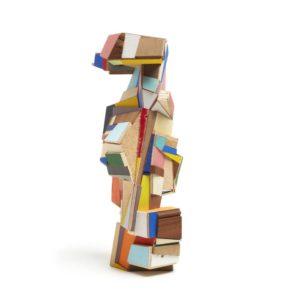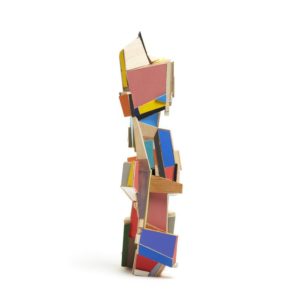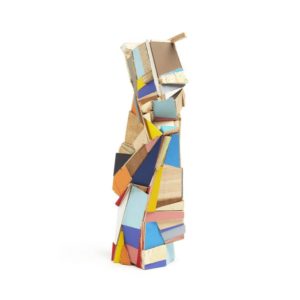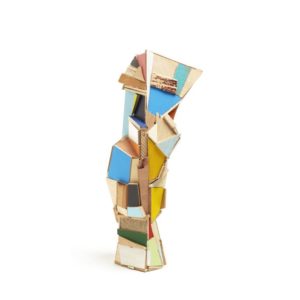Art We Love
 First Look: Marc Sparfel Gives Materials New Life
First Look: Marc Sparfel Gives Materials New Life
Great art can transform materials and defy expectations, giving new life to mundane or forgotten objects. For Marc Sparfel, the transformation begins on the streets of his adopted hometown, Barcelona, where he finds the material foundations for his sculptures—scrap wood. Having grown up in the countryside, Marc was struck by the proliferation of scrap wood left in the city streets. The free and readily available material eventually found its way into his work, first in the form of masks and animal sculptures constructed with the likes of chair legs and broken door knobs. Marc has spent years experimenting with found materials, culminating in his latest series of geometric abstracts, exclusively available on Saatchi Art.
Tell us a bit about yourself and your background as an artist.
I’m a French artist, living and working in Barcelona for more than twenty years. It has been quite a long path to find myself as an artist. I studied and worked in different areas before being a sculptor. Currently my work is on display in galleries in Germany, France, Spain, the United States, and Israel.
What inspired this series?
This is a mini series I made with the smallest wooden scraps I had, as I never throw away any piece of wood.
And where do you find these wood pieces?
Once a week I pass by a woodwork shop that throws out its scraps in the street. From time to time I also go to my local carpentry near my studio and see if they are about to throw anything away.
Was it your mission to use all of the leftover pieces you have accumulated to create these?
I see it as an opportunity to stimulate my creativity. I don’t think anything truly deserves to be thrown away. I love working at different scales because it allows for something new or unexpected to happen. I love challenging people’s assumptions about which objects are waste and which are allowed to be beautiful, and I wish that all kinds of scraps could find a place in my work.
Can you walk us through the creation of a work from beginning to end?
I’m used to creating pieces in a series. It’s a way to thoroughly explore an idea. Then, when the energy is coming down, I know the series is ending.
Generally I determine only two things before starting: the tone of the piece (multicolor or monochrome), and an idea of its size.
As in a restaurant kitchen before a service, I make my “mise en place,” preparing the material, the tools, and the studio. Then I start to work, improvising, assembling scraps together.
What goes through your mind as you work with these scraps?
I’m always quite excited when I’m working as I don’t know what exactly will happen. I’m not in the habit of making sketches or maquettes. I work directly with wooden scraps in a kind of improvisation. I don’t think about anything but the piece while I’m working on it, it absorbs me entirely.
Your previous works are very figurative, whereas these are markedly abstract. What was that departure from the figure like?
An intermediary work, Fossiles, led me to abstraction. Suddenly I felt the background wanted me to give it center stage, reversing the roles of object and background.. and this ended in abstraction.
What challenges or surprises came with this series?
The challenge was how practically to use so many small scraps of wood. This is the reason why I used a hot glue gun. Constructing at this scale doesn’t need much of a reinforced structure, so it’s a very fluid way to work.
What do you hope viewers take away from these works?
I love the creativity of my viewers in the variety of interpretations they have about my work. I never know what people will think of my work, and that’s the most exciting part!
Love reading about all things art? You can have articles from Canvas, curated collections, and stories about emerging artists delivered straight to your inbox. Sign up for the Saatchi Art Newsletter.












